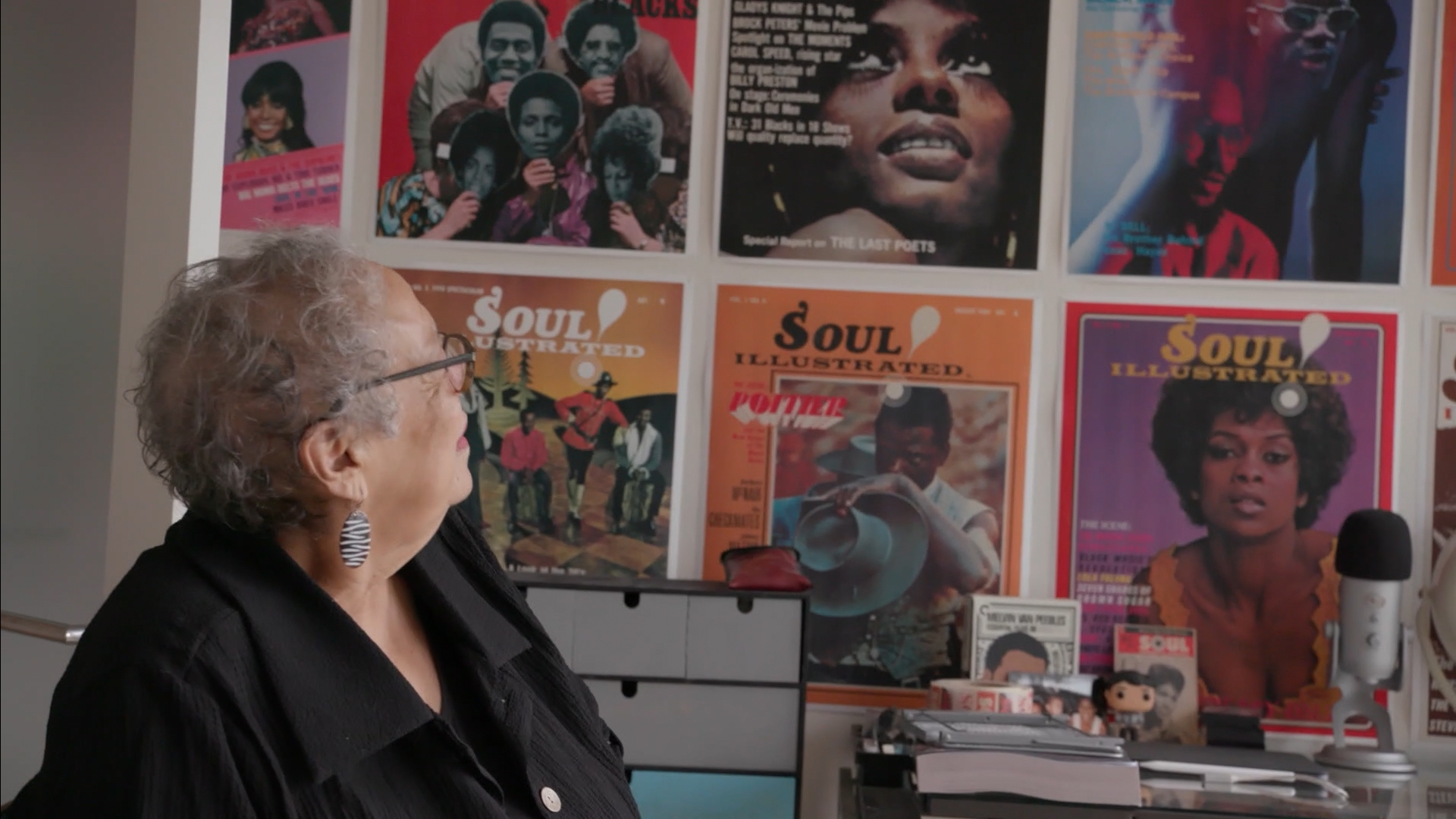Who in the Hell Is Regina Jones?
(USA, 99 min.)
Dir. Billy Miossi, Soraya Sélène
The name Regina Jones might not be widely known, but it deserves its place in pop culture history. The aptly titled documentary Who in the Hell Is Regina Jones? tells the story of how Jones created space for Black representation and voices in the media as the publisher of Soul. Running from 1966 to 1982, Soul was the first magazine devoted specifically to Black musicians and perspectives from the music scene. It’s a wonderful tribute, but also a spot-on account of the dedication and determination that goes into running an independent magazine—a cause that POV knows all too well!
Jones, who enjoys her 80th birthday during the course of filming, still remembers the glory days of putting Soul to the printer. She tells how her husband Ken co-founded the magazine, which ran as an eight-page newspaper in its original editions. (Eight pages are standard prints with page folds and whatnot.) She takes pride in the publication’s authentic voice and willingness to have conversations about Black culture from which other publications shied away, like the appropriation of Black sounds by artists like The Rolling Stones.
She credits Ken for providing a breakthrough moment by covering the Watts riots. Jones recalls the immediacy of his reporting and, while sifting through the archives, finds his hand-written notes. She remembers her days working the telephone line as the riots broke-out. Recognizing the proximity to her home and her children, but the urgency of the reportage from a Black perspective, Jones cites the riots as a key motivator for her work with Soul. She still gets palpably mad when speaking about the overt and systemic racism that people in her community experienced, especially at the hands of the police.
In the early days, Jones continues in her easygoing, conversational, and candid interviews, Soul could get a fair bit of access as one of few Black-owned magazines for Black readers. Breakthroughs came with the Jackson 5 on the cover and collectible issues of the magazine that featured different members of the family. Jones shares her shrewd business sense that helped turn each issue of Soul into an “event.” Bags of fan mail, she notes, flooded her home as indicators of an issue’s success.
Another key moment, Jones recalls, came in landing Donna Summer on the cover. Jones tells how Summer’s people wanted Soul to run a handout photo on the cover, which offered a great and glamorous shot, but one that didn’t reflect the publication, its attitude, or its audience. Jones shares how she stood up for the mag’s voice and said she wanted their own photographer to get the shot. Summer’s people gave them 20 minutes with the singer, who strutted into the office and got the job done.
This segment of Who in the Hell Is Regina Jones? hits a nerve for an indie publisher as it tackles every publisher’s love/hate relationship with cover photos. The dreaded cover photo is a source of stress that few people truly understand. Having barely survived issues with some rockers on the cover of POV, I don’t envy Jones for dealing with so many musicians issue after issue. But the great shot of Summer speaks to her tenacity on the job.
However, the doc captures the highs and lows that come with running a print magazine in a fickle market. Jones admits that as doors opened for more Black publications, advertisers spread themselves across outlets and access to talent came less easily. On one hand, Jones recognizes the doors she opened for Black writers, artists, and publishers through Soul’s success. On the other, she visibly takes the failure of the magazine hard, especially as her husband’s financial mismanagement pulled the rug out from under her success.
The spirit of the magazine endures through other publications for which Soul paved the way, though. As Jones observes her grandson, Matt, digitise the print archive so that a new generation of readers can explore a history of 373 issues, the impact isn’t lost on her.
The film also offers a personal window into Jones’ dedication to her work and family as she confronts the racism that he kids faced while growing up. There’s a revealing moment in which Jones hears the words of her late son, who struggled with lifelong addiction. It’s an interview conducted for the film. Her son relates his struggles back to a pivotal point during his school years that his mother recognized as traumatic, but never discussed with him. It was a moment she says she knows too well, having faced series of double standards as a Black woman leading a business at a time when American culture was having its own reckoning with race relations and human rights.
It’s fitting that Jones’ story filters this personal and collective experience through a magazine that articulated news and views from the music scene. As many music docs note, songs on the airwaves were key to change and bridging diverse American experiences through music. Soul and Jones were key to ensuring that Black voices had their share of the conversation. This film warmly gives credit where it’s clearly due and brings Jones back into the conversation.












